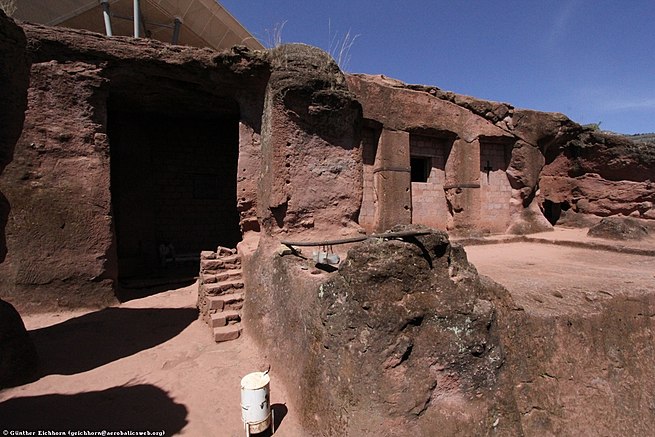
-
Cathedral
A cathedral is a church that contains the cathedra (Latin for “seat”) of a bishop, thus serving as the central church of a diocese, conference, or episcopate. Churches with the function of “cathedral” are usually specific to those Christian denominations with an episcopal hierarchy, such as the Catholic, Anglican, Orthodox, and some Lutheran and Methodist churches. Church buildings embodying the functions of a cathedral first appeared in Italy, Gaul, Spain and North Africa in the 4th century, but cathedrals did not become universal within the Western Catholic Church until the 12th century, by which time they had developed architectural forms, institutional structures and legal identities distinct from parish churches, monastic churches and episcopal residences.
Following the Protestant Reformation, the Christian church in several parts of Western Europe, such as Scotland, the Netherlands, certain Swiss Cantons and parts of Germany, adopted a Presbyterian polity that did away with bishops altogether. Where ancient cathedral buildings in these lands are still in use for congregational worship, they generally retain the title and dignity of “cathedral”, maintaining and developing distinct cathedral functions, but void of hierarchical supremacy. From the 16th century onwards, but especially since the 19th century, churches originating in Western Europe have undertaken vigorous programmes of missionary activity, leading to the founding of large numbers of new dioceses with associated cathedral establishments of varying forms in Asia, Africa, Australasia, Oceania and the Americas. In addition, both the Catholic Church and Orthodox churches have formed new dioceses within formerly Protestant lands for converts and migrant co-religionists. Consequently, it is not uncommon to find Christians in a single city being served by three or more cathedrals of differing denominations.
The word “cathedral”, as the seat of a bishop, is found in most languages; however in Europe a cathedral church can be referred to as a Duomo (for example in Italian, Spanish) or Dom (e.g. German, Dutch, etc.), from the Latin term domus ecclesiae or domus episcopalis. While the terms are not synonymous (a duomo is a collegiate church, cognate with the English “Minster”) many cathedral churches are also collegiate churches, so that Duomo, or Dom, has become the common name for a cathedral in those countries.
In the Eastern Orthodox Church, the English word “cathedral” commonly translates as katholikon (sobor in Slavic languages), meaning “assembly”, but this title is also applied to monastic and other major churches without episcopal responsibilities. When the church at which an archbishop or “metropolitan” presides is specifically intended, the term kathedrikós naós (literally: “cathedral temple”) is used.
In the Catholic or Roman Catholic tradition, the term “cathedral” correctly applies only to a church that houses the seat of the bishop of a diocese. The abbey church of a territorial abbacy serves the same function (that is, houses the seat of the abbot), but does not acquire the title. In any other jurisdiction canonically equivalent to a diocese but not canonically erected as such (prelature, vicariate, ordinariate, prefecture, apostolic administration), the church that serves this function is correctly called the “principal church” of the respective entity—though some have coopted the term “cathedral” anyway. The Catholic Church also uses the following terms.
A pro-cathedral is a parish or other church used temporarily as a cathedral, usually while the cathedral of a diocese is under construction, renovation, or repair. This designation applies only as long as the temporary use continues.
A co-cathedral is a second cathedral in a diocese that has two sees. This situation can arise in various ways such as a merger of two former dioceses, preparation to split a diocese, or perceived need to perform cathedral functions in a second location due to the expanse of the diocesan territory.
A proto-cathedral is the former cathedral of a transferred see.The cathedral church of a metropolitan bishop is called a metropolitan cathedral.
The term “cathedral” actually carries no implication as to the size or ornateness of the building. Nevertheless, most cathedrals are particularly impressive edifices. Thus, the term “cathedral” is often applied colloquially to any large and impressive church, regardless of whether it functions as a cathedral, such as the Crystal Cathedral in California or the Arctic Cathedral in Tromsø, Norway. Although the builders of Crystal Cathedral never intended the building to be a true cathedral, the Roman Catholic Diocese of Orange purchased the building and the surrounding campus in February 2012 for use as a new cathedral church. The building is now under renovation and restoration for solemn dedication under the title “Christ Cathedral” in 2019.
-
Church (noun)
A Christian house of worship; a building where religious services take place. from 9th c.
“There is a lovely little church in the valley.”
“This building used to be a church before being converted into a library.”
-
Church (noun)
Christians collectively seen as a single spiritual community; Christianity. from 9th c.
“These worshippers make up the Church of Christ.”
-
Church (noun)
A local group of people who follow the same Christian religious beliefs, local or general. from 9th c.
-
Church (noun)
A particular denomination of Christianity. from 9th c.
“The Church of England separated from the Roman Catholic Church in 1534.”
-
Church (noun)
Christian worship held at a church; service. from 10th c.
-
Church (noun)
A (non-Christian) religion; a religious group. from 16th c.
“She goes to a Wiccan church down the road.”
-
Church (noun)
assembly
-
Church (verb)
To conduct a religious service for (a woman) after childbirth. from 15thc.
-
Church (verb)
To educate someone religiously, as in in a church.
-
Cathedral (noun)
A big church building, central place for some area.
-
Cathedral (noun)
The principal church of an archbishop’s/bishop’s archdiocese/diocese which contains an episcopal throne.
-
Cathedral (noun)
A large buttressed structure built by certain termites.
-
Cathedral (adjective)
Relating to the throne or the see of a bishop
